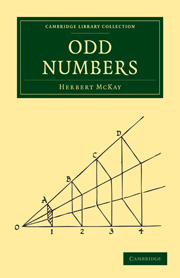Book contents
- Frontmatter
- Contents
- CINDERELLA IN GLASS SLIPPERS
- Millions & Billions & Trillions
- Great Powers & Little Powers
- How we got Logarithms
- Proportion
- Comparisons
- Proportion in Triangles
- Weights & Measures
- The Delusive Average
- Approximations
- Multiplication & Division
- Tables
- Units
- Oddities of Numbers
- The Construction & Solution of Problems
- Scales of Notation
- Frontmatter
- Contents
- CINDERELLA IN GLASS SLIPPERS
- Millions & Billions & Trillions
- Great Powers & Little Powers
- How we got Logarithms
- Proportion
- Comparisons
- Proportion in Triangles
- Weights & Measures
- The Delusive Average
- Approximations
- Multiplication & Division
- Tables
- Units
- Oddities of Numbers
- The Construction & Solution of Problems
- Scales of Notation
Summary
On March 17, 1791 a report—perhaps the most unscientific scientific report ever published—was presented to the French National Assembly. This report proposed the adoption of a decimal system of weights and measures based on the measurement of a quadrant of the earth's circumference along the meridian of Paris. The meridian was measured, and the metric system based on it was finally enforced in France in 1840. Since then the metric system has been adopted by numerous countries for commercial purposes, and almost universally for scientific purposes. The metric system is permissive in Great Britain; but in spite of the earnest efforts of many reformers it has not been enforced to the exclusion of other measures.
One might have thought that a scientific commission would begin, logically, by considering what a unit is. They would have seen that it is a convenient amount of the quantity to be measured, and they would have gone on to find what is the most convenient amount. They might also have considered that the units they devised would be used for two very different purposes—scientific and commercial—and that the needs of scientists are not necessarily the same as those of merchants.
But the commission seems to have been obsessed with the idea of relating the unit of length to some natural standard, and they chose for the unit of length the ten-millionth part of the quadricircumference of the earth measured along the meridian of Paris. The measurement was a matter of great difficulty; it could only be approximate; and there is no certainty that the distance measured is constant.
- Type
- Chapter
- Information
- Odd Numbers , pp. 103 - 112Publisher: Cambridge University PressPrint publication year: 2009First published in: 1940

